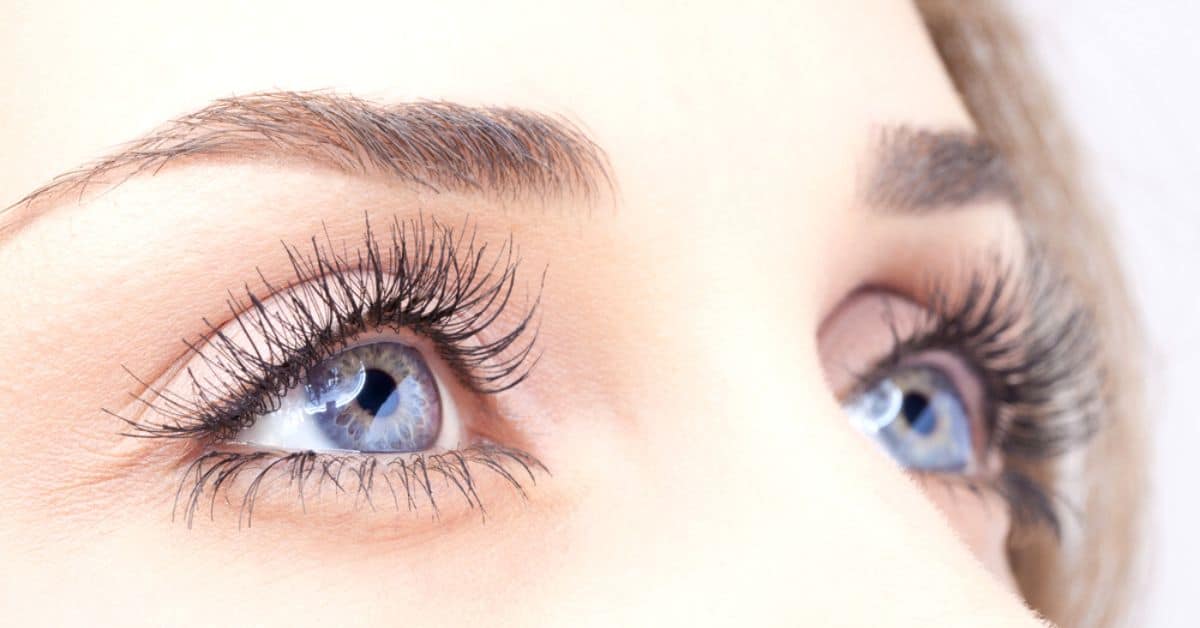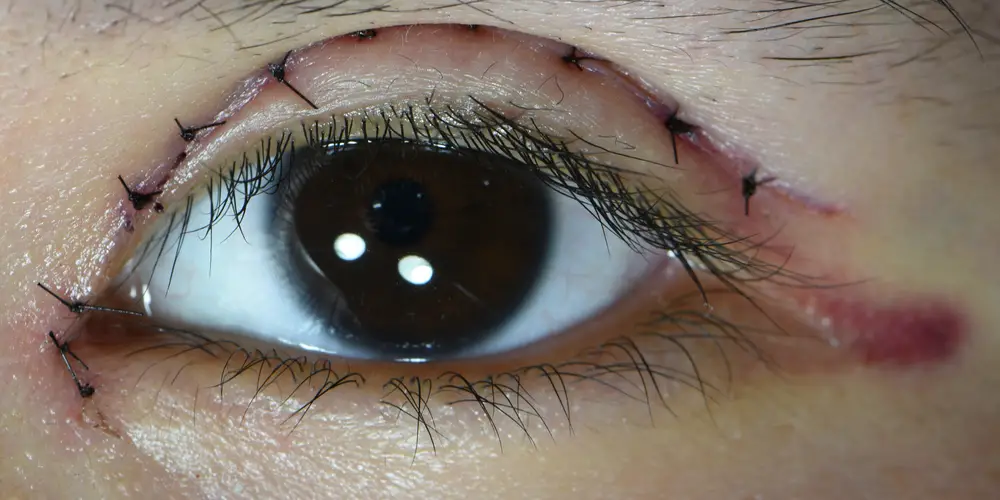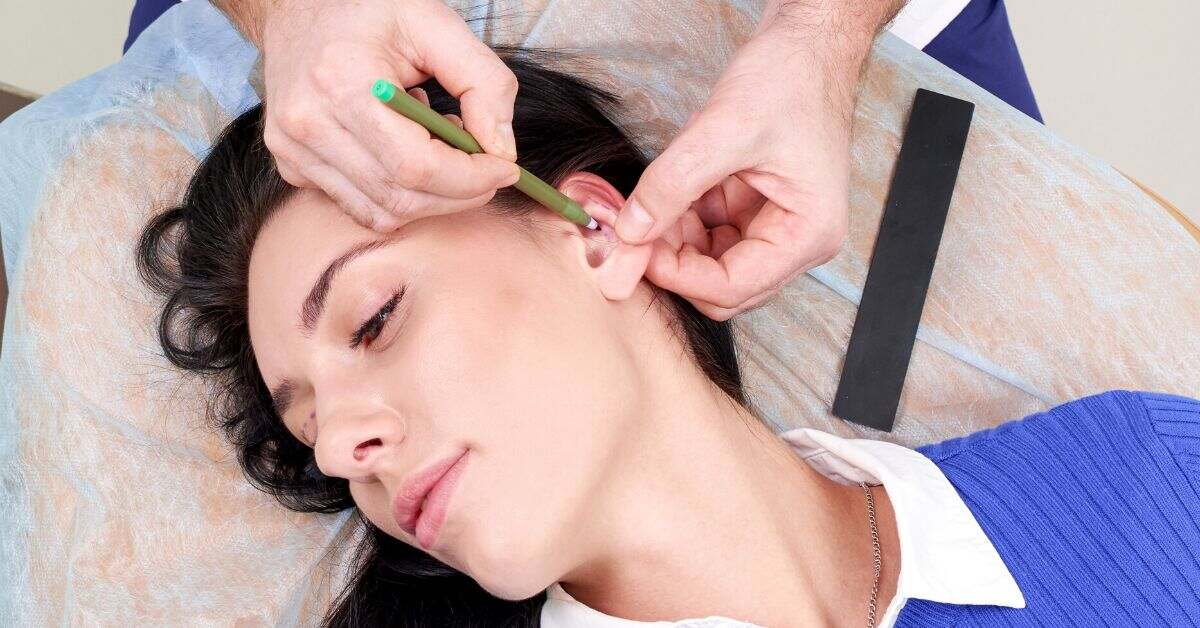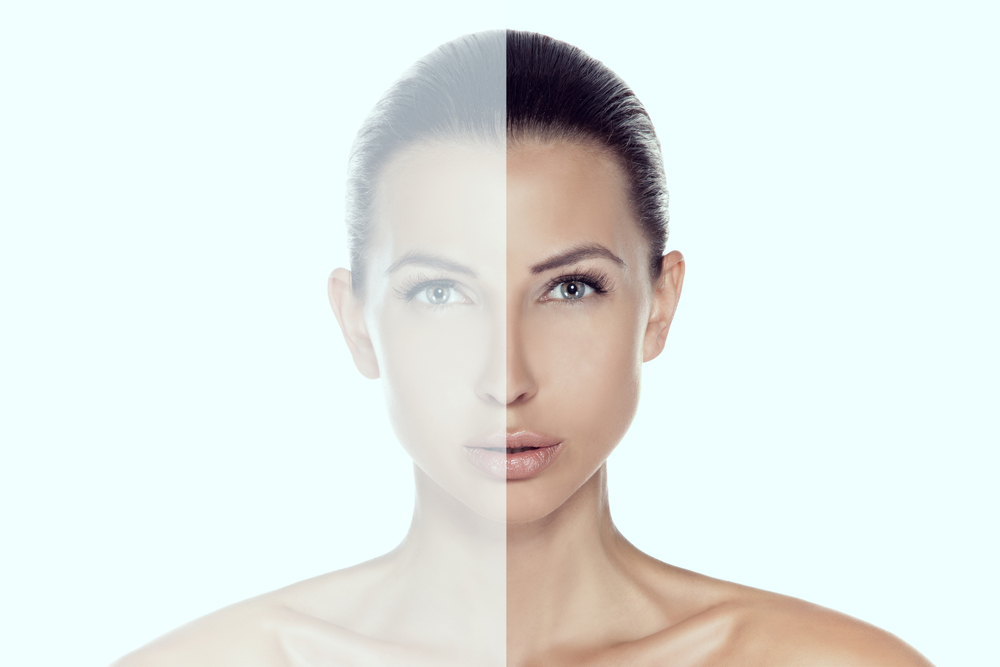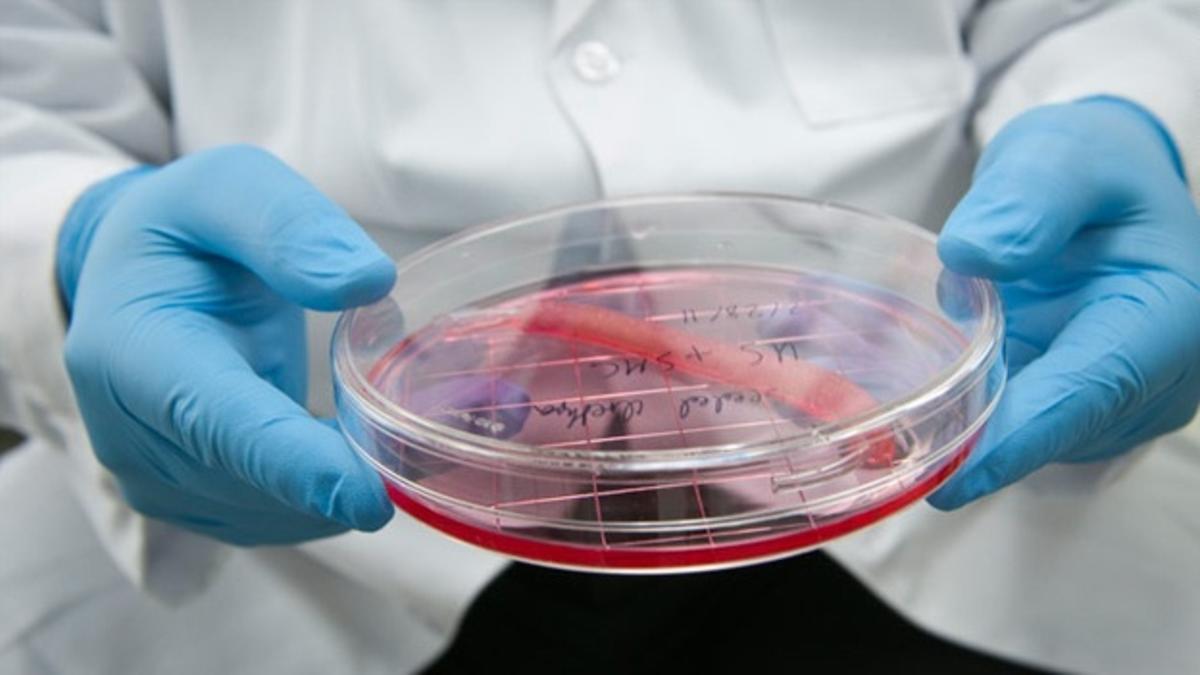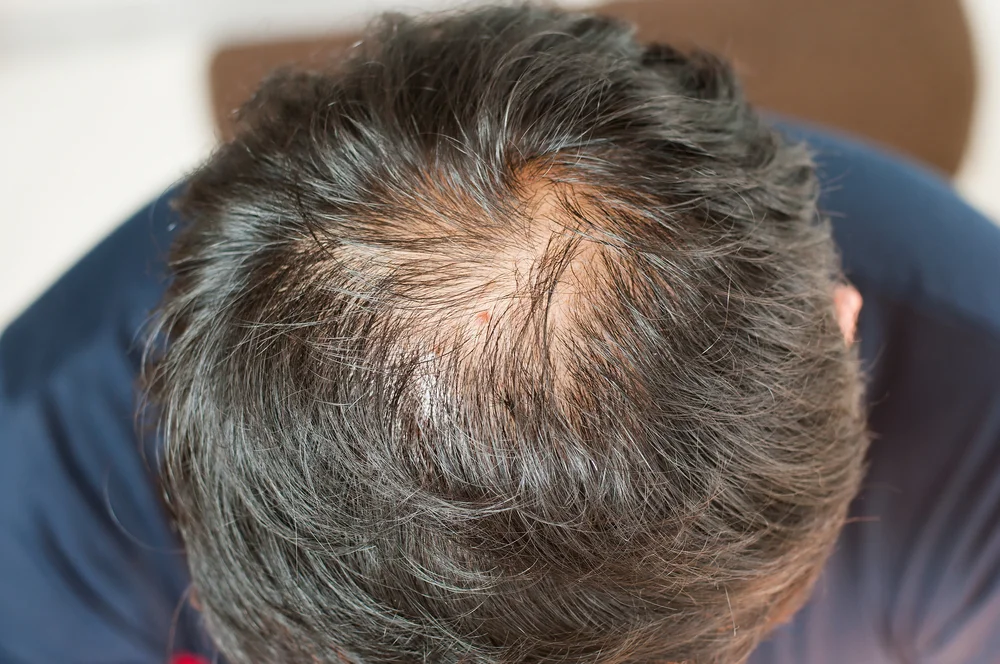Eyelid surgery, or blepharoplasty, is a surgical procedure that rejuvenates or reshapes the eyelid contours by modifying skin, fat or muscles in the area.
This guide outlines everything you need to know about blepharoplasty before scheduling your first plastic surgery consultation.
What is Eyelid Surgery?
Eyelid surgery, or blepharoplasty, is a surgical procedure that rejuvenates the eyelid contours by modifying skin, fat, or muscles in the area. Sometimes this procedure is called an “eyelid lift,” which can be misleading because a “lift” isn’t always involved.
The goal of the procedure is to give the eyes and face a younger, more appealing and well-rested appearance. Eyelid surgery is mostly performed for cosmetic reasons, but in certain cases it’s used to help improve sight in older people, or anyone whose drooping or sagging upper eyelids obstruct their vision.
There are three types of blepharoplasty:
- Upper blepharoplasty: This procedure uses incisions to allow the required amount of skin and fat to be removed. Muscles may also be tightened through the incisions. A very thin stitch is then used to bring the skin back together to heal within the eyelid crease.
- Lower blepharoplasty: This procedure involves the removal of fat and skin, as well as a possible tightening of the muscles. It can involve an incision just below the eyelash line, or on the inside of the eyelid, which is called transconjunctival blepharoplasty. While the incision technique directly below the lash line will be nearly invisible once healed, the transconjunctival approach heals without any visible incision at all. Lower eyelid surgery may be combined with laser resurfacing of the lid skin, which helps to reduce lines and wrinkles, something blepharoplasty can’t do alone.
- Double eyelid surgery, or “Asian blepharoplasty”: The purpose of this third type of eyelid surgery is to create a horizontal crease, technically known as a supratarsal epicanthic fold, in an upper eyelid that is naturally without one (monolid). This involves making a fine incision in the upper eyelid and suturing the tissues together. There is also a technique that does not involve incisions, called non-incision double eyelid surgery.
Upper and Lower Eyelid Anatomy
The eyelid is a beautifully complex structure, made up of a number of different tissues and muscles. These include the outer layer of skin and the layers of tissue and fat directly below it, muscles that control blinking and the expressiveness of your eyes, and the structures that support and help give your eyelids their shape.
Skin & subcutaneous tissue
The eyelids are mostly made of skin. At less than 1 mm thick, it’s the thinnest skin on your entire body. Inside the skin are sebaceous glands that secrete an oily lubricant called sebum to help keep everything moving smoothly.
There are more of these sebaceous glands within the skin of the eyelids closest to your nose, which is why that area is generally more oily.
Orbicularis oculi muscle
This muscle has a double role in the face, playing an important part in how your eyelids function, and also helping in facial expressions. Forming a rough horseshoe shape around the eye, the orbicularis oculi muscle is specifically used for blinking, winking, and tightly squeezing your eyes shut.
Submuscular areolar tissue
Below the orbicularis oculi muscles there is a thin layer of loose connective tissue that contributes to the development of the crease in your upper eyelid. This tissue also includes the retro-orbicularis oculi fat, which is responsible for the fullness and shape of your outer upper eyelid, and the suborbicularis oculi fat, which helps round out the lower eyelid.
Fibrous tissues
There are 5 main fibrous structures within your eyelids that help support and maintain their shape:
- The tarsal plates are dense, fibrous, and stiff panels of tissue found inside each of your eyelids. They allow your eyelids to hold their shape.
- The medial palpebral ligament holds the tarsal plates in place on the side closest to your nose.
- The lateral palpebral ligament helps to hold the tarsal plates in place on the temple side of you eyes.
- The orbital septum is essentially the inside of your eyelids. It is a thin, membrane like, fibrous structure that forms the inner barrier of the eye socket.
- The orbicular retaining ligament attaches the orbicularis oculi muscle to the lower rim of the eye socket, and helps hold everything in place.
Eyelid retractors
As the name implies, eyelid retractors are a small group of muscles responsible for opening and closing your eyes. The major muscle responsible for keeping your upper eyelid elevated when open is called the levator palpebrae superioris (LPS).
Fat pads
Your eyelids have a number of fat pads within and around the eyes to help shape and support them.
Conjunctiva
This is the deepest layer of the eyelid. The conjunctiva is a modification of the skin layer, and makes up the inner surface of your eyelid. The conjunctiva is connected to the deep layers of the fibrous support structures and the eyelid retractor muscles.
…and that’s your crash course on eyelid anatomy!
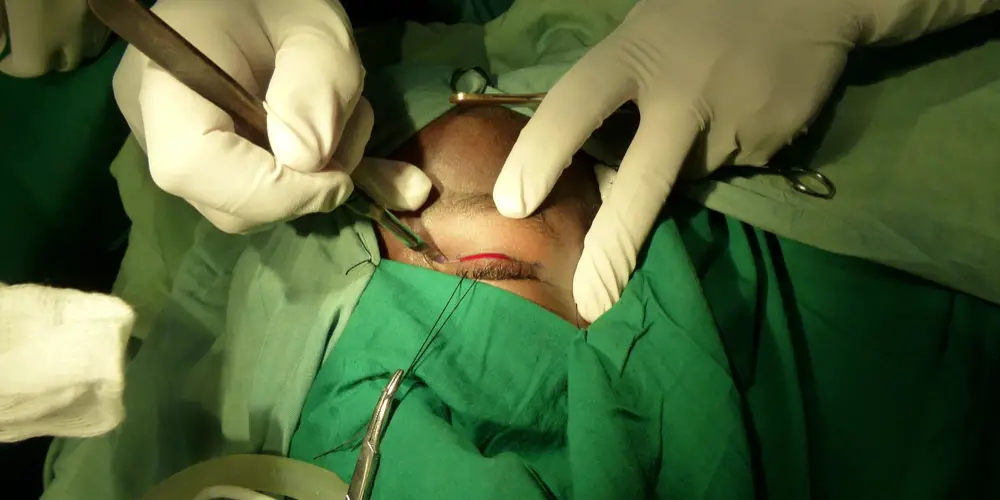
How the Eyelids are Affected by Aging
The eyelids and delicate skin around the eyes are the generally the first areas of the face to show signs of aging. Sagging, bulging, and unsightly crow’s feet slowly start to appear as you grow older.
Most of the time these are no more than cosmetic nuisances, but sometimes they can hinder vision or even irritate the eyes.
Ptosis
Over time it’s normal for the upper eyelids to start to sag as the muscles and fibrous structures that support them begin to lose their strength. This sagging is called ptosis (pronounced TOE-sis).
Though it’s usually caused by age, upper eyelid sagging can also be the result of an injury or disease. Under most circumstances, drooping upper eyelids are just an aesthetic concern, but it can become more serious. Sometimes the sagging is so pronounced that the lid actually covers part or all of the pupil, affecting vision.
Blepharochalasis
Blepharochalasis is an uncommon, but natural effect of aging related to the loss of strength in the muscles and support structures of the eyelid. The skin loses its elastic quality over time and begin to droop. This, combined with the constant pull of gravity, can often cause extra skin to collect on both the upper and lower eyelids.
When this happens on the upper lid, it can lead to a new skin fold being formed that can droop over the eyelashes and block the upper part of your vision.
Wrinkles
There are two distinct types of wrinkles that begin to form around your eyes as you age. The first are small, fine lines. These are a natural part of the aging process and are formed through a number of factors, including the skin’s loss of elasticity, or excessive sun exposure.
The second type of eye wrinkles are much more defined, and are created by the creases made in your skin over decades of making facial expressions. The easiest to recognize example of this are the crow’s feet that appear at the outer corners of your eyes from smiling and laughing.
Under eye bagginess
Under eye bags are an unsightly pairing of loose skin, and pockets of fat pushing out through a weakened lower eye muscle. This age-related change contributes to an unappealing “tired” look.
As you age, the muscles in your face not only begin to weaken, but may also begin to store more fat. The combination of weaker muscles and higher fat content allows these fatty deposits to bulge forward, causing eye bags.
Under eye grooves
The opposite of bags under your eyes is the appearance of grooves or tear troughs. These hollow-looking areas under the eyes can develop as you age, and can often appear as dark shadows under the eyes under a certain light, also contributing to that “tired” look.
Entropion
Entropion, or eyelid inversion, refers to a “turning in” of the eyelid. This typically occurs on the lower eyelid, and as the skin rolls inward it can rub painfully against the eyeball. In the worst examples of entropion, the skin rolls so far inward that the lashes can also rub against the eye.
This sometimes uncomfortable malformation usually happens as a result of the muscles around the eye gradually weakening with age, trauma, or an underlying medical condition. It only takes a spasm or relaxation of the muscles near the eye for the lid to turn inward.
In some cases the lid is constantly turned towards the eye, but in others it only happens when the eye is closed tightly.
Ectropion
As the exact opposite of entropion, ectropion describes a “turning out” of the eyelid, again typically on the lower lid. In this case the skin of the inner lower lid is exposed, either in only a section of the eye, or across the entire length of the lid.
With the lower eyelid turned out like this, tears aren’t able to drain away from the eye correctly, causing irritation. Ectropion is usually caused by the age-related weakening of the connective support tissues around the eyes, but it can also be caused by sun damage, tumors, or burns.
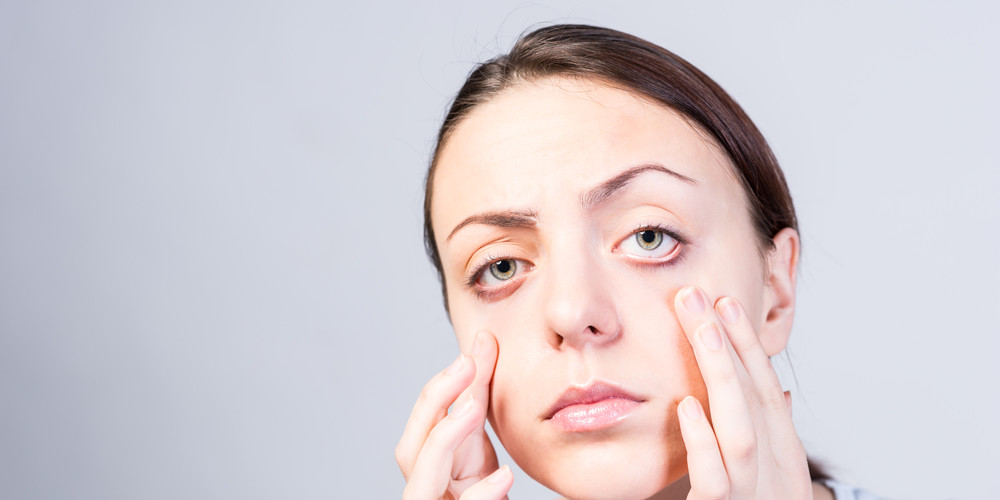
Other Cosmetic Concerns Related to the Eyelids
Although the majority of cosmetic issues that impact on your eyelids are a result of the aging process, there are a few other aesthetic concerns that have little or nothing to do with the passage of time.
Monolid
The term “monolid” refers to upper eyelids that don’t have a visible crease when they’re open. The technical term for this is “epicanthic fold” and specifically refers to a fold of skin on the upper eyelid that covers the inner corner of each eye, nearest the nose.
Naturally saggy lids
While age is by far the most common reason for your eyelids to begin to droop, many people simply have a natural droop in the shape of their eyelids. While this can be caused by trauma, the most common reason is simply that the muscle that controls the lid didn’t develop properly.
Though this is usually only a cosmetic concern, it’s possible for children with naturally saggy eyelids to develop other vision problems, like a lazy eye.
Ideal Candidates for Eyelid Surgery
Unfortunately, not everyone is a good candidate for blepharoplasty. Age, overall mental and physical health, as well as the presence of certain eye related medical conditions can prevent patients from having the procedure performed.
Ideal candidates for blepharoplasty include people with:
- Puffy upper eyelids
- Excess upper eyelid skin and/or fat
- Tired looking eyes that seem older than they are
- Bags or grooves under the eyes
- Monolids
Ideal candidates for blepharoplasty should also be:
- At an age where the signs of aging have become firmly established. That means most patients are middle aged, but if drooping or baggy eyelids are common in your family, you might be a good candidate at an younger age.
- In good physical and mental health. Blepharoplasty is a relatively minor procedure compared to other types of plastic surgery, but like every surgery it carries with it a certain amount of risk, which may vary from patient to patient. A good candidate carefully considers these risks before making a final decision regarding moving forward with the procedure.
- Realistic about the outcome. Although blepharoplasty can have a lasting impact on both appearance and function, it’s important to understand that even the longest lasting results might ultimately prove to be temporary due to the effects of aging and lifestyle choices. Make sure you have realistic expectations and goals for the procedure beforehand.
There are a few medical considerations to be taken into account before deciding on eyelid surgery. Some of the medical conditions that can prevent a patient from being an ideal blepharoplasty candidate include:
- Glaucoma or dry eye, which can be aggravated by the procedure
- Hyperthyroidism
- Cardiovascular disease
- Diabetes
- High blood pressure
- An existing medical condition
- Weaknesses in the eye socket’s anatomy. This can include any number of issues, but generally refers to there being insufficient support structures around the eye to facilitate the surgery.
Preparing for Blepharoplasty
In order to ensure a safe and successful procedure, even an ideal candidate will need to undergo some preparation during the weeks leading up to the operation.
Before your eyelid surgery, it’s important to have tests done to measure both your vision and your tear production. If you suffer from any condition that dries out your eyes, it could cause serious complications. This kind of testing is necessary to make sure you are a good candidate for the procedure in the first place.
In the weeks before surgery you should also do your best to stay healthy. Eat well, drink lots of water, and make sure you are well rested. The stronger and healthier your body is going into any surgical procedure, the better equipped it will be to heal and recover afterwards.
If you are a smoker, stop smoking at least 2-3 weeks before your surgery. Your surgeon will strongly recommend you stop because smoking has an especially damaging effect on the skin, particularly the thin and delicate skin of your eyelids. Smoking will significantly slow down the healing process.
Stop drinking alcohol at least a week before your surgery. Like smoking, alcohol can have a negative impact on your recovery. Alcohol also works as a blood thinner and can contribute to excess bruising and bleeding during the procedure and recovery.
You’ll also need to cease taking any blood thinning medications or supplements, such as aspirin or ibuprofen, at least a week or two before your procedure. Like alcohol, these medications can cause unnecessary complications during and after surgery.
Lastly, be sure you have spoken to your surgeon about any concerns or questions you may still have. You will likely be provided with a set of preparation instructions. Take the opportunity to make sure you understand what is expected of you, and what you should expect following surgery.
10 Eyelid Surgery Preparation Tips
- Plan to have friend or loved one drive you home from your surgery and spend at least the first 24 hours with you. This person should be able to speak with a nurse, and receive and understand some post-op instructions. Making these arrangements beforehand gives you a feeling of control, and will help put any lingering anxieties to rest before your procedure.
- Attend your appointment without any makeup or skincare products on your face.
- Wear loose fitting, comfortable clothing. It’s highly recommended that you wear flat shoes, comfortable pants, and a button-down shirt. You won’t want to pull anything over your head for at least a few days following the operation. You’ll also want to bring dark sunglasses to protect your sensitive eyes.
- Don’t wear contact lenses to your appointment. Bring your glasses instead. Contacts can irritate and dry out your eyes.
- Try to avoid direct sunlight for two weeks before your surgery. If you must be in the sun at all, it’s highly recommended you wear sunblock with an SPF 30 or higher. SPF 50 is ideal. UV exposure weakens your skin.
- Fill any and all prescriptions before the date of your surgery. Following your surgery, it may be a few days before you are able to go back to your normal routine, so it’s a good idea to make sure you have all your medications ahead of time.
- Ensure that all your commitments are taken care of ahead of time. This might mean making prior arrangements for children, taking care of housework, booking time off work, or simply making sure you have the appropriate supplies such as groceries and toiletries. These are all things you won’t want to worry about while recovering.
- Buy supplies to help with your recovery before coming to your surgery. These supplies should include:
- Ice cubes or a cool pack
- Gauze
- Cotton swabs
- Pillows
- Thermometer
- Over-the-counter laxative
- Lubricating eye drops
- Do not eat or drink from midnight onwards the night before your surgery. If your procedure is under a local anesthesia you won’t need to fast.
- Be sure to follow all the pre-operative instructions given to you by your surgeon.
How Eyelid Surgery is Performed
Blepharoplasty can be divided into three distinct procedures: upper, lower, and double eyelid. Surgery can be one or a combination of these.
Upper Blepharoplasty
An upper blepharoplasty is performed to remove or reposition excess skin and fat from the upper eyelid. The procedure usually takes between 1 and 3 hours, depending on the details of your particular needs. This surgery can be done either under local or general anesthesia.
Upper eyelid surgery is usually carried out in 8 steps:
- Paying close attention to the contours and shape of your eyelid and the desired result, your surgeon will carefully plan out the incisions before they’re made.
- Anesthesia is administered. If you’re going under general anesthesia you will be put to sleep, and if you’re just using a local anesthetic the area will be numbed.
- Following the natural creases of the upper eyelid, incisions are made in such a way that any resulting scar will be camouflaged.
- Excess skin is removed. It is through this cut that the rest of the surgery can be carried out.
- A strip of orbital septum is taken from the length of the entire eyelid. This will allow your surgeon access to the fat pads that lie just underneath.
- The eyelid is reshaped by carefully removing fat (or adding it in some cases) from different areas around the eye.
- Any bleeding, especially from the orbicularis oculi muscle, is actively and aggressively controlled through a combined effort between your body’s natural responses and your surgeon.
- The incisions are closed. Either dissolving, absorbable sutures or traditional, non-absorbable sutures can be used. If your procedure uses the more traditional sutures, you’ll need to have them removed about 3 to 7 days after your surgery.
Upper eyelid surgery is often combined with other procedures. Fat or filler injections can be made to give sunken eyes or brow areas a fuller, more youthful appearance. In the case of patients suffering from ptosis, a tightening of the muscle that controls the upper eyelid can also be done.
Laser tightening of the skin to address some wrinkles can also be performed in combination with an upper blepharoplasty. Lastly, many patients combine upper eyelid surgery with a lower blepharoplasty, brow lift, canthoplasty (which helps shape the outer corners of the eyes), and other eye or facial procedures.
Lower Blepharoplasty
Lower eyelid surgery is used to address under eye bagginess, loose skin, and sagging of the lower eyelid. There are a few different approaches available to surgeons, but in general, each technique involves removing or reshaping fat or repositioning the orbital septum, while removing extra skin and tightening loose muscle.
The two most common approaches to the lower blepharoplasty are the transcutaneous approach and the transconjunctival approach.
Transcutaneous approach
Transcutaneous means “through the skin,” and describes the kind of incision made in this technique. The incision in made just below the line of lashes on the lower lid, where it will be virtually invisible after it has healed.
After this initial cut is made, the surgery proceeds in a similar way to the upper blepharoplasty, with fat being removed, added, and/or reshaped. This approach is good for sagging skin or the orbicularis oculi muscle, which supports the lower eyelid from below.
Transconjunctival approach
In this approach, the initial incision is made inside the lower eyelid: transconjunctival means “through the conjunctiva.” This approach requires an understanding of the fragile structures closest to the eye. Again, it’s through this incision that the fat and muscle will be removed or added, and reshaped.
This technique offers a few benefits over the transcutaneous approach, including:
- No external incision scar at all
- Better preservation of the shape of the orbicularis oculi muscle
- Less trauma to the delicate network of fibrous support tissue within the eyelid
Double Eyelid Blepharoplasty
The double eyelid surgery, or “Asian blepharoplasty,” gives the upper eyelid a visible crease or fold when the eye is open. It’s been estimated that about 50% of Asians do not naturally have a double eyelid fold.
Not only is the double eyelid fold considered a desirable feature for some, but the procedure can also help give the eyes a more open and full appearance, making them look less tired. The quantity of skin and fat present, as well as the epicanthic fold and other structures can vary from patient to patient, so one technique won’t fit all cases.
The two most common approaches are incisional and non-incisional.
Incisional approach
If you have extra skin and fat that you would like removed from your upper eyelids, an incisional approach will be used to create the fold.
The procedure moves forward similarly to an upper blepharoplasty, with the surgeon drawing the proper pattern, followed by an incision on the upper lid. A small amount of skin and fat is then removed. This is not only done to help shape the eyelid, but also so the new crease will fold naturally, without creating a hollow-looking area.
Non-incisional approach
Although technically still a surgery, the non-incisional approach doesn’t make any cuts, and doesn’t remove any tissue. Instead, small openings are made in the skin where the new fold is to be created. A stitch is then passed through these openings in a way that attaches the upper eyelid skin to the levator muscle below.
This results in a natural looking upper eyelid fold when the eyes are open. However, there is a higher risk of asymmetry and loss of results.
RELATED: Asian Eyelid Surgery Techniques, Recovery and Results
Recovering from Surgery
Regardless of the specifics of your particular procedure, blepharoplasty is usually performed on an outpatient basis.
Swelling in the areas around your eyes might gradually appear worse over the first few days, but it will slowly subside. The initial recovery usually takes about 2 weeks, but it can take as long as 6 weeks for all the swelling to disappear and for the final results to reveal themselves.
Day 1
Once the procedure is completed your eyelids will be supported with paper tape to make sure they heal properly and with the desired contours. Your eyes may also be covered in gauze for up to 3 days after surgery.
You’ll need someone to drive you home after surgery. Your vision will be blurry, and your eyes may need to be covered for a while after your operation. This can be unnerving at first, but it’s only temporary, and your full vision will return as your recovery progresses.
Blurriness is caused by these factors:
- Swelling
- Dryness, and the drops that are used to keep your eyes moist
- The ointment your surgeon will use to protect your eyes during the operation
Week 1
Eyelid surgery is often performed with dissolving sutures, so you might not have to come back to have stitches removed. If you receive traditional sutures, you’ll have to come back to have them removed after about 3 days to a week.
If you start to experience an excessive amount of tearing or dryness after surgery, your surgeon may recommend eye drops to help. Be sure to follow all the post-operation instructions given to you by your surgeon.
If you choose to use over-the-counter pain management medication, be sure to discuss with your surgeons which are appropriate to use. You’ll need to continue to stay away from non-steroidal anti-inflammatory drugs, like aspirin and ibuprofen, as they increase the chances of bruising and bleeding.
Week 2
Most patients are able to go back to work within 10 days after their eyelid surgery. That being said, there may be some tasks, like reading, that could still be difficult because of some lingering blurred vision.
You can begin light exercise within a few days, but it’s best to refrain from anything strenuous for at least 4 to 6 weeks. You should completely avoid any contact sports until your surgeon gives you the go-ahead.
You should be able to start using eye makeup again, as long as its sterile (since it can increase your risk of infection). If you have black eyes or “raccoon” eyes after the procedure, rest assured, they fade with time. Many patients find that eye makeup helps to “camouflage” any bruising and discoloration of the eyes during the recovery period.
Eyeglasses are okay to use immediately after surgery, but you should wait at least 2 weeks before wearing contact lenses. Your eyes may be sensitive to light for a little while, so protect your vision with a pair of dark sunglasses.
Eyelid Surgery Scars
Thanks to the techniques used in today’s eyelid surgeries, there should be virtually no visible scarring once you are fully recovered. At first, your scars may be quite noticeable, but with time they will fade. Remember, all new scars go through a known set of phases:
- In the beginning of your recovery your scars will appear red (sometimes very red), and slightly thickened. Sometimes this thickening can continue to increase for up to 4 weeks after surgery. The scars might also appear shiny.
- Small white cysts, called milia, might grow from inside the incision. These are temporary and rarely need treatment.
- After an upper eyelid blepharoplasty, it isn’t uncommon to notice a little extra bumpiness at either end of the scars. This usually fades over a few months.
Just like any other healing cut, you’ll first notice improvements on a daily basis, then weekly for about a month, then monthly for 6 months to a year. Finally, you won’t notice the scars at all.
Just as the external scars take time to heal, the internal incision from a transconjunctival lower blepharoplasty also needs time to fully heal. This incision goes through much more than just skin; in most cases three or four layers of muscle, fat, septum, and tendons are cut. This may take longer than an upper eyelid scar, and your eyelids will feel stiff, “rubbery,” and tight until the healing is nearly finished.
10 Tips for a Speedy Recovery
- Try to keep your head raised at all times during your recovery, whether you’re awake or asleep. This simple measure helps to keep your eyelids from swelling too much, and helps speed up recovery. Keep 2-3 pillows under your head whenever you’re in a reclined position.
- Wait at least 24 hours before having your first shower after your surgery. Be careful to not fully submerge your incisions under water until they’ve closed up.
- Limit or avoid reading and watching television for at least the first 48 hours after surgery, or longer if you can help it. It may be tempting to do either of these activities while you recover, but they can dry out your eyes, prolonging your healing process.
- Avoid sunbathing for 4-6 weeks, or until your surgeon says it’s okay. Wear dark sunglasses and/or SPF 30+ sunblock when you do go out.
- For the first 24 to 48 hours after your surgery stick to easily digestible foods, like Jell-O, ginger ale, and soups. These kinds of food are easily absorbed by your body, allowing it to focus all its energy on healing. If you don’t feel any nausea you can then go back to your normal diet.
- Stay hydrated and stick to healthy, low sodium foods. Your body will need all the proper nutrition it can get for a speedier recovery. Salty foods should be avoided because they can contribute to swelling.
- Applying a cold compress to your eyes during the first few days will help keep the swelling and bruising down. Try applying the compress for 20 minutes every 2 hours during the first 48 hours of your recovery. Don’t leave the compress on for too long — you don’t want to get frostbite!
- Pay special attention to how you touch your face during recovery. For the best results, you should try not to bump, stretch, scratch, or rub your eyes for 4 weeks. You will be able to wash your face 24 hours after surgery, but be gentle around your eyes, and pat-dry.
- Avoid any serious exercising or heavy lifting for the first 4 weeks after your surgery. During this time try not to bend down to pick up heavy objects, but if you must, keep your head elevated and bend at the knees.
- Call your surgeon immediately if you experience:
- A fever of 101 or greater
- Redness spreading away from the incision sites
- Any unusual and painful swelling
- Any active and excessive bleeding
- Pus draining from the incisions
- Pain that persists through medication
- Any vision problems or sharp pains in the back of your eyes
- Any swelling or bulging of your eyeball or the surrounding tissue
Risks and Complications
Because eyelid surgery is a relatively minor procedure, complications are extremely rare and usually temporary. In addition to the normal risks of infection and adverse reaction to anesthesia, blepharoplasty carries a few minor side effects, including:
- Dryness and a burning sensation immediately after surgery
- Minor bleeding
- Swelling at the corners of the eyelids
- Slight asymmetry in healing or scarring
- Temporarily blurred or double vision
- Undercorrection of the eyelids
- Overcorrection, which is when too much tissue is removed
- Temporary excessive tearing of the eyes
- Prominent or firm scars
- Numbness in the eyelids
Blepharoplasty also carries an extremely small risk for several more serious complications, including:
- Inability to close the eyelids: This rare complication usually fixes itself after a few weeks, but during that time you may need eye drops, humidifiers, and even tape to keep your eyes fully closed at night to ensure adequate lubrication. If this condition lasts longer than 8 weeks or so, another procedure might be needed to fix the problem.
- Scratched cornea, which can impair sight.
- Bleeding behind the eyes. This unlikely complication will need immediate attention if it occurs. This kind of bleeding will cause severe pain in the eye sockets, and might have an effect on your vision. In the worst cases it can lead to blindness, though this is extremely rare.
Maintaining Your Results
The final results of a blepharoplasty can take several weeks to reveal themselves, but typically the final outcome is quite long lasting. It’s not uncommon for upper eyelid surgery results to last 10-15 years, and lower eyelid surgery is rarely repeated at all. However, the natural effects of aging will impact your results.
In general, the eyes appear healthier, younger, and more well rested. Most patients are quite happy with the outcome and generally feel more confident. Those who undergo eyelid surgery to correct a vision problem should notice an immediate improvement, since the skin obscuring their sight will simply be gone.
Even though the final results of your eyelid surgery will last for years to come, age and other factors will continue to have an effect on your skin. The best way to ensure that your results last as long as possible is to maintain a healthy lifestyle. Proper nutrition, good hydration, and plenty of exercise help keep the skin firm and youthful looking.
Rest is also a key factor in the longevity of your results, so make sure a good night’s sleep is a regular and important part of your schedule. Smoking, on the other hand, is very detrimental; since cigarette smoke can contribute to skin sagging, it’s best to avoid smoking after your operation. If you are a smoker, this may be a good opportunity to quit.
Latest Techniques and Scientific Studies
As the demand for blepharoplasty surgery has increased, so too has its evolution and surgeons’ views on all elements of the procedure. Blepharoplasty remains one of the more challenging surgical interventions, thus surgeons are constantly considering novel ways of approaching and executing the procedure to ensure the best possible outcome for patients.
Lower eyelid surgery in particular demands expertise, as surgery can sometimes lead to complications such as aesthetic deformities or functional impairment. A June 2017 study reported in Plastic and Reconstructive Surgery outlines the addition of a sixth step to lower blepharoplasty surgery to enhance aesthetic results. This sixth step would include the addition of fractionated fat into targeted areas of the lower eyelid to better blend the junction between the eyelid and the cheek for a more seamless result.
Recent innovations in lower eyelid blepharoplasty have also endeavored to address what is known as the “tear trough deformity.” The tear trough is a natural depression that runs from the inner corner of the eyelid along the infraorbital rim to the outermost corner of the eye. However, when the tear trough is deformed, the skin is thinner, causing the underlying muscle and fat to become more prominent and appear darker or discolored.
A 2017 study also published in Plastic and Reconstructive Surgery reported that the technique for addressing deep tear troughs beneath the lower eyelid can be improved by the addition of micro free-fat grafts to add volume. An initial study of 32 patients who received treatment as an adjunct to lower eyelid blepharoplasty experienced very good outcomes, without any significant complications such as lid retraction or infections.
Frequently Asked Questions
Am I a good candidate for a blepharoplasty?
The best blepharoplasty patient is in good mental and physical health, is a non-smoker, and has realistic expectations for their results. If you have excess skin or fullness in the eyelids, or have prominent bags or grooves under your eyes, you are most likely a good candidate. There are, however, some pre-existing medical conditions that might prevent someone from being a good candidate, including:
- Glaucoma
- Hyperthyroidism
- High blood pressure
Am I too young for a blepharoplasty?
While most blepharoplasty patients are over 35 years old, there is no lower age limit. If you suffer vision problems, dislike having monolids, or have sagging eyelids that run in your family, you might be a good candidate at a much younger age.
Can I combine blepharoplasty with other procedures?
Yes! It is quite common for patients to decide to have a facelift, mid-face lift, neck lift, brow lift, skin resurfacing, or facial liposuction at the same time. Having multiple procedures done on the same day will probably prolong your recovery time, but it also will allow you to potentially accomplish many goals with a single surgery.
How much does eyelid surgery cost?
The cost of eyelid surgery depends on a few factors, including:
- What you would like to achieve
- Where you live
- If eyelid surgery is combined with other procedures
Generally speaking, pricing can range from $2,000 to $7,000.
Is blepharoplasty covered by insurance?
Most likely, no. This is because blepharoplasty is considered a cosmetic procedure, and cosmetic procedures are not usually covered by insurance. However, if your eyelid surgery is necessary for medical reasons, then it may be covered.
Are creams an effective alternative treatment for puffy eyes?
There are countless creams out there that claim to treat puffy eyes, but none of them can address the most common root cause of undereye bags: fat pads bulging and pushing through weakened muscles. No matter how expensive or exclusive a cream claims to be, no topical ointment can treat the underlying structures of the eyelid. Creams can help make the skin appear smoother, but only blepharoplasty can treat the source of the puffiness.
Should I get blepharoplasty or a brow lift?
Sometimes elevating the brow will pull up excess upper eyelid skin, making a blepharoplasty unnecessary. This would be something to discuss during consultation with your surgeon.
Will blepharoplasty address my wrinkles?
No. Eyelid surgery is not designed to remove the “crow’s feet” wrinkles that appear at the corners of your eyes, nor can it help with the horizontal creases caused by a sagging brow. There are other procedures available that can help with these issues, like laser resurfacing and pulsed light treatments. Both of these can be combined with blepharoplasty.
Will a lower blepharoplasty treat malar bags?
No. Unlike undereye bags, malar bags (also known as festoons or cheek bags because of their location on the upper cheek bones) are usually filled with fluid. They may be caused by allergies, sinus problems, genetics, and smoking, and eyelid surgery generally has no real impact on them.
How long does eyelid surgery take?
Your particular blepharoplasty will be unique and how long it takes depends on your anatomy and goals. That being said, the average eyelid surgery takes about 1 to 3 hours to complete.
How long do the results last?
It’s not uncommon for upper eyelid surgery results to last well over 10 years, and lower eyelid surgery is rarely repeated at all. In fact, even if you decide to “touch up” your upper eyelid surgery in the future, your eyes should still be in much better condition than if no surgery had ever taken place. Healthy lifestyle choices will help prolong your results.
Is it safe?
In the hands of an experienced board certified surgeon, blepharoplasty is extremely safe. As with any surgery there is a small amount of risk involved, but all the complications associated with eyelid surgery are exceedingly rare.
Is blepharoplasty painful?
Most people who have the procedure are surprised at how painless the surgery can be. There will probably be some initial tightness or burning around the eyes, with a little mild discomfort that lasts for a few days. Pain relievers can be taken as needed.
Will I be bruised after the surgery?
Yes. Since the skin around your eyes is very sensitive and fragile, all patients experience some level of bruising and swelling after surgery. The extent of the bruising and how long it lasts depends on the person, but you should be able to hide most of the discolouration with makeup in a matter of days.
Will I have scars?
Upper eyelid incisions are expertly hidden by a crease in the lid. If the lower eyelid incisions are made through the inside layer of your eyelids, there will be no visible scars at all. If the lower lid incisions are made through the skin directly below the lashes, the scar will be virtually invisible as it will be hidden by the lash line.
When will my eyelids look normal again after surgery?
While swelling and bruising should fade almost completely after about 6 weeks, the redness of the upper lid incisions may remain for several weeks longer. You might also feel some small bumps beginning to form under the upper eyelid incision. This might last for a while, but these are both normal side effects of the healing process and will resolve themselves after a couple of months. Most scars take about a year to fully mature, but because blepharoplasty incisions are so fine, your scars may not take as long.
What is an Asian blepharoplasty?
Also known as a “double eyelid” blepharoplasty, an Asian blepharoplasty is an eyelid surgery that creates a crease in the upper eyelid. It’s a popular procedure around the world for men and women who have a “single eyelid” (or monolid, which has no crease) and would prefer a “double eyelid” (one with a crease).





